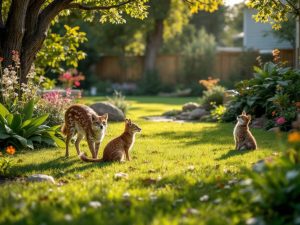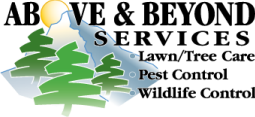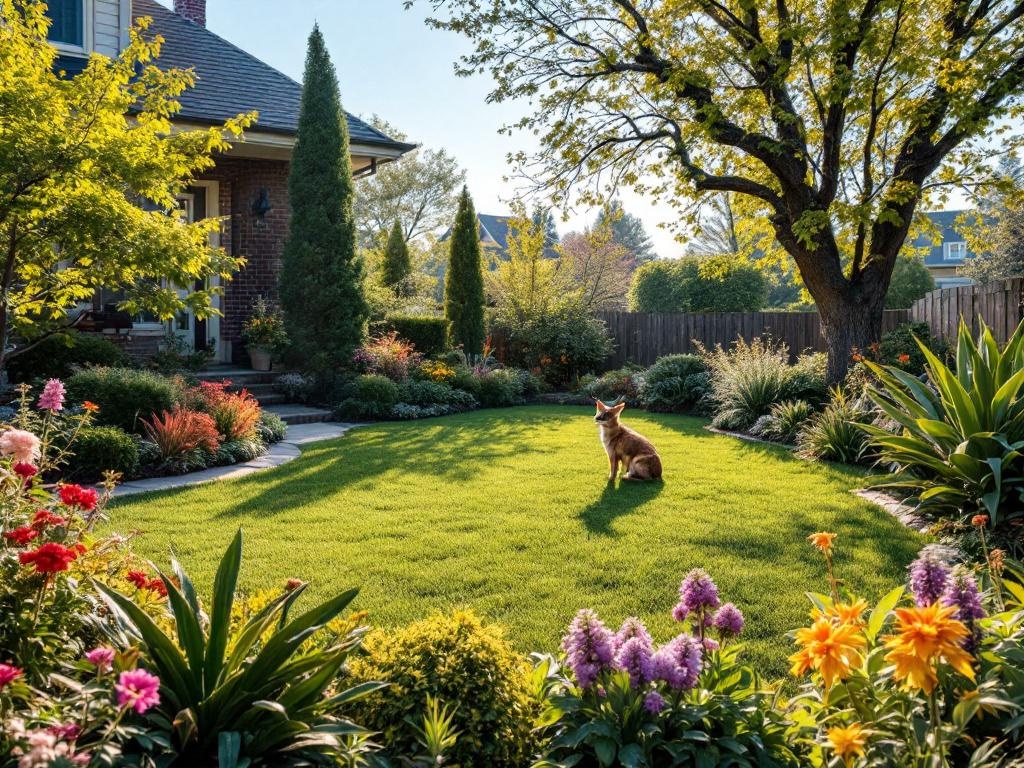Wildlife Proofing Your Property: Effective Strategies for Colorado Homeowners
To effectively wildlife proofing in Colorado home, you must initially start by deeply understanding local animal behavior. Subsequently, diligently secure all potential entry points, such as doors, windows, and vents, to unequivocally keep unwanted critters out.
Furthermore, it’s crucial to build a tall, sturdy fence around your property and meticulously manage all accessible food sources by utilizing bear-proof trash containers. You can also implement natural deterrents like cayenne pepper and garlic to repel wildlife from your yard and garden.
Ultimately, regularly maintaining your property and educating your family on these preventative measures are vital for sustained success. Discover more comprehensive ways to effectively protect your home from unwanted animal visitors, significantly enhancing your overall wildlife proofing efforts.
Understanding Local Wildlife Behavior: The Foundation of Wildlife Proofing

Understanding local wildlife behavior is absolutely essential for implementing effective wildlife proofing in Colorado strategies around your Colorado home. By diligently observing the animals prevalent in your area, you can accurately identify recurring patterns in their habits, movements, and food-seeking behaviors. For instance, if you consistently notice raccoons frequenting your trash bins after dark, you might want to secure them more tightly or consider storing them indoors.
Furthermore, educate yourself thoroughly on the specific species that inhabit your immediate surroundings, as their diverse feeding and nesting habits can greatly impact your property. Knowing when these creatures are most active—whether nocturnal or diurnal—will also help you anticipate potential problems and target your wildlife proofing efforts more effectively.
Additionally, always consider seasonal changes that might influence their behavior, such as mating seasons, winter foraging for scarce resources, or the spring emergence of young. For example, bears are more active in spring and fall, while deer may seek food in your garden during winter.
By being proactive and well-informed about local wildlife, you can implement preventive measures that effectively deter them from invading your space while simultaneously respecting their natural instincts and role in the ecosystem. This foundational knowledge is paramount for successful wildlife proofing in Colorado.
Securing Your Home’s Entry Points: Essential for Wildlife Proofing
To effectively prevent wildlife from entering your home and significantly bolster your overall wildlife proofing efforts, it’s absolutely essential to meticulously secure all potential entry points.
Indeed, even the smallest gap can be an invitation for a determined critter. Start by thoroughly inspecting all doors and windows for any existing gaps, cracks, or loose seals. Use durable weather stripping around doors and repair or install secure screen mesh on all windows to seal any openings.
Moreover, do not overlook less obvious entry points such as vents (attic vents, dryer vents, foundation vents) and chimneys; installing sturdy, animal-proof caps or screens on these can unequivocally keep various critters, like birds, bats, squirrels, and raccoons, from gaining access.
Furthermore, inspect utility entry points where pipes, wires, or cables enter your home, sealing any gaps with appropriate materials like steel wool or expanding foam. Repair any damaged siding, loose shingles, or holes in your roof, as these can also serve as access points, especially for rodents and squirrels.
Here’s a quick overview of common entry points and their corresponding wildlife proofing in Colorado solutions:
| Entry Point | Common Issues | Solutions |
|---|---|---|
| Doors | Gaps under thresholds, weak locks, damaged screens | Weather stripping, door sweeps, deadbolts, reinforced screens |
| Windows | Cracks in frames, unlatched windows, damaged screens | Caulking, window locks, sturdy mesh screens |
| Vents & Chimneys | Openings, damaged covers, missing caps | Durable mesh screens, chimney caps, vent covers |
| Foundation/Crawl Space | Cracks, unsealed openings, damaged crawl space doors | Concrete patching, mesh screening, reinforced crawl space doors |
| Roof & Attic | Loose shingles, unsealed eaves, damaged soffits | Repair shingles, seal gaps with flashing, install soffit screens |
By meticulously addressing these vulnerable areas, you create a much more secure barrier against unwanted wildlife, significantly enhancing your home’s wildlife proofing in Colorado.
Fencing Solutions for Gardens and Yards: A Core Wildlife Proofing Strategy
After successfully securing your home’s interior entry points, it’s time to strategically turn your attention to the outdoors, where fencing plays a crucial role in your overall wildlife proofing plan. Indeed, fencing is one of the most effective physical barriers for keeping various wildlife species at bay, particularly from gardens and yards.
Consider installing a sturdy, tall fence made of durable materials like wood, vinyl, or heavy-gauge wire mesh. Ideally, for deterring deer and other large animals, the fence should be at least six feet high, and potentially even eight feet in areas with high deer populations.
For smaller critters like rabbits, raccoons, or groundhogs, it’s absolutely essential to bury the fence at least six to twelve inches underground, or even add an L-shaped footer extending outwards, to prevent them from digging underneath.
Furthermore, for added protection, install a fence with a smooth top or a downward-sloping top, as animals can easily climb over barbed wire or chain-link styles that offer footholds. You might also consider electric fences for particularly persistent animals, though these require careful installation and clear warning signs.
Remember to regularly inspect your fence for any gaps, holes, or damage that wildlife could exploit, ensuring it remains an effective, long-lasting barrier against unwanted visitors in your garden and yard. Consistent maintenance is paramount for effective wildlife proofing in Colorado.
Managing Food Sources and Trash: A Vital Wildlife Proofing Measure

While you might instinctively think a sturdy fence or secured entry points are sufficient, meticulously managing food sources and trash is, in fact, absolutely essential in keeping wildlife away from your property. Indeed, readily available food is a primary attractant that can undermine all your other wildlife proofing efforts. Secure your trash by storing it in bear-proof containers with tight-fitting, locking lids.
Furthermore, when possible, keep your trash bins inside a garage, shed, or other secure enclosure until collection day.
Avoid leaving pet food bowls outside, especially overnight, as they can attract raccoons, possums, coyotes, and even bears. Clean up any spills promptly after feeding outdoor pets. If you have a composting system, make absolutely certain your compost bin is animal-proof, with secure latches and no accessible openings for digging or foraging.
If you feed birds, choose feeders that specifically deter larger animals, such as squirrel-proof designs, and diligently clean up any spilled seeds regularly, as these can attract rodents and other opportunistic feeders.
Additionally, consider your garden; protect fruits and vegetables with netting, cages, or secure fencing to prevent animals from enjoying your harvest. Even fallen fruit from trees should be promptly picked up. By diligently eliminating easily accessible food sources, you remove a major incentive for wildlife to visit your property, making your wildlife proofing in Colorado significantly more effective.
Creating a Wildlife-Friendly Landscape (That Deters Pests)
Creating a landscape that is both aesthetically pleasing and inherently deters unwanted wildlife is a smart approach to wildlife proofing. While you want to coexist with nature, you also want to protect your home. By making a few thoughtful changes, you can attract beneficial wildlife like pollinators while simultaneously making your yard less appealing to nuisance animals.
Here are some effective strategies:
- Native Plants: Choose plants that are naturally tolerant to Colorado’s climate and less palatable to certain wildlife, such as deer-resistant varieties. These plants often require less water and maintenance.
- Wildflower Gardens: While attractive to pollinators like bees and butterflies, ensure they are placed away from the house to avoid attracting other insects that might then seek indoor shelter.
- Strategic Planting: Plant thorny or spiky shrubs closer to your home’s foundation or beneath windows to create a natural barrier against climbing animals.
- Water Sources (Controlled): If you install a birdbath or small pond, ensure it’s kept clean and positioned away from direct access points to your home, to avoid attracting larger animals for drinking.
- Natural Shelters (Controlled): While brush piles can offer shelter, consider placing them further from your home. Create rock gardens closer to the house, as they are less likely to attract rodents or other burrowing animals.
- Avoid Pesticides: Keep your landscape chemical-free to protect beneficial insects and the surrounding ecosystem, which, in turn, helps maintain a natural balance that can deter some pests.
- Proper Pruning: Keep trees and shrubs regularly pruned, removing lower branches that could provide easy access to your roof or attic for climbing animals.
Embrace these strategies, and you’ll create a harmonious space that is both appealing and effectively supports your wildlife proofingin Colorado goals.
Installing Motion-Activated Lights: An Active Wildlife Proofing Measure
Installing motion-activated lights not only significantly enhances your property’s security against human intruders but also serves as an effective, active deterrent for wildlife from wandering too close to your home. Indeed, sudden, bright illumination can startle and repel nocturnal animals that might otherwise approach your property.
These lights are specifically designed to activate when they detect movement, instantly illuminating dark areas and causing a momentary surprise that encourages animals to retreat. Position them strategically around all potential entry points, along driveways, near trash storage areas, and in any dark corners of your yard to maximize their effectiveness as a wildlife proofing tool.
Choose bright, energy-efficient LED lights for optimal visibility and reduced electricity consumption. Furthermore, regularly check the sensors to verify they’re functioning correctly and adjust their sensitivity as needed to avoid false triggers from very small animals, like squirrels, while still effectively detecting larger wildlife.
This proactive measure not only keeps your property safer and better lit but also helps maintain a respectful distance between wildlife and your home, complementing your overall wildlife proofing efforts.
Using Natural Deterrents: Eco-Friendly Wildlife Proofing Solutions
After enhancing your property’s security with motion-activated lights, consider integrating natural deterrents to further keep wildlife at bay. Indeed, these eco-friendly solutions offer a safe and sustainable way to protect your home without resorting to harmful chemicals or aggressive tactics, making them excellent wildlife proofingin Colorado additions.
Here are some effective options that leverage animals’ natural aversions:
- Cayenne Pepper: Sprinkle it around your garden beds, along fences, or near entry points. The spicy scent and taste can deter animals like squirrels, raccoons, and even deer without causing them harm.
- Garlic: Plant garlic cloves in your garden or use a homemade garlic spray on plants. Many critters dislike its strong odor and will avoid areas treated with it.
- Lavender: This fragrant herb not only smells pleasant to humans but also acts as a natural repellent for certain pests like mosquitoes and some types of rodents. Plant it near windows or garden perimeters.
- Coffee Grounds: Scatter used coffee grounds around your garden beds or near entry points. The strong smell can deter animals who dislike its pungent aroma.
- Essential Oils: Create a spray using water and essential oils like peppermint, citrus (lemon, orange), or eucalyptus. Spray this mixture on vulnerable areas to create a natural barrier. These scents are often offensive to rodents and other small mammals.
- Predator Urine: Some garden centers sell granular or liquid forms of predator urine (e.g., fox, coyote). Applying these around the perimeter can trick prey animals into thinking a predator is nearby, causing them to avoid the area.
Incorporating these natural deterrents can make your property significantly less inviting to wildlife, serving as a gentle yet effective wildlife proofing measure.
Monitoring and Maintenance Practices for Sustained Wildlife Proofing
While you’ve diligently taken numerous steps to deter wildlife, ongoing monitoring and consistent maintenance are absolutely essential to guarantee your property remains secure and your wildlife proofing strategies continue to be effective over time. Indeed, barriers can degrade, and animal behaviors can change.
Regularly inspect all your fences, gates, and other physical barriers for any signs of wear, damage, or new breaches. Make any necessary repairs promptly to prevent wildlife from exploiting weaknesses and breaching your defenses.
Furthermore, meticulously check for new gaps or potential access points in your landscaping or foundation that animals might have created or discovered. Keep your yard consistently tidy by promptly removing fallen fruit, spilled birdseed, and other debris that can attract unwanted visitors. Ensure all trash bins are securely closed and inaccessible.
Additionally, observe any new animal activity in your area, carefully noting patterns or frequent sightings of specific species. If you notice changes in animal behavior or new signs of intrusion, be prepared to adjust your wildlife proofing strategies accordingly, perhaps by adding a new deterrent or reinforcing a vulnerable spot.
This continuous vigilance and proactive upkeep are critical for maintaining the long-term effectiveness of your wildlife proofing in Colorado.
Educating Your Family and Neighbors: A Collaborative Approach to Wildlife Proofing
Educating your family and neighbors about wildlife proofing best practices can profoundly enhance your collective efforts to keep your properties secure and foster harmonious coexistence with Colorado’s diverse wildlife. Indeed, when everyone in the community is on the same page and actively participates, you create a much safer and more effective environment for both humans and animals.
Here are some key points to share and discuss with your community:
- Secure Trash Bins: Emphasize the importance of using sturdy, tight-fitting, and ideally locking lids on all trash bins to deter scavengers like raccoons, bears, and coyotes.
- Keep Pet Food Indoors: Advise against leaving pet food bowls outside, especially overnight, as this is a powerful attractant for a wide range of wildlife.
- Remove Bird Feeders Seasonally: During peak bear season (spring through fall), strongly recommend removing bird feeders or securing them at night to reduce readily available food sources for bears.
- Seal Entry Points: Encourage neighbors to regularly inspect and seal any gaps, cracks, or openings around their homes, similar to the wildlife proofing steps you’ve taken for your own property.
- Utilize Motion-Activated Lights: Promote the use of motion-activated lights around homes, highlighting their effectiveness in scaring off nocturnal animals without causing harm.
- Share Sightings: Establish a neighborhood communication channel (e.g., a group chat, community board) to share information about recent wildlife sightings or unusual animal behavior.
By fostering this collaborative approach, you multiply the effectiveness of individual wildlife proofing in Colorado efforts, benefiting the entire community.
When to Seek Professional Help for Wildlife Issues
When should you consider calling in the experts for persistent or complex wildlife issues? If you’ve encountered consistent animal intrusions, if the damage caused is extensive, or if you suspect the presence of potentially dangerous or protected species that are beyond your safe control, it’s unequivocally time to reach out for professional help. Indeed, emergency tree removal for fallen trees that attract wildlife could also indicate a need for a broader assessment of wildlife proofing in Colorado. Professionals possess the specialized knowledge, tools, and permits (where necessary) to assess your specific situation accurately and provide tailored solutions for humane and effective wildlife management.
Here are some clear signs it’s best to consult an expert for wildlife proofing:
| Signs to Seek Help | Why It’s Important |
|---|---|
| Frequent Animal Sightings/Intrusions | If wildlife repeatedly enters your home, garage, or garden despite your best efforts, they may have established a den or nesting site that requires professional intervention for removal and subsequent wildlife proofing. |
| Structural Damage to Home | Significant gnaw marks, chewed wires, damaged insulation, or compromised structural elements indicate a serious infestation that can pose safety risks to your property and require expert repair and wildlife proofing. |
| Health Concerns/Disease Risk | Wild animals can carry diseases like rabies, hantavirus, or parasites. If you suspect direct contact or contamination, professionals can safely remove animals and sanitize areas. |
| Failed DIY Attempts | If your personal wildlife proofing attempts (deterrents, minor sealing) haven’t worked, continued efforts might be ineffective, costly, and could inadvertently worsen the situation or cause harm to the animal. |
| Presence of Protected Species | Some wildlife species are protected by law, requiring specific permits or professional handling for removal to avoid legal penalties. |
| Animal is Trapped or Injured | Never attempt to handle a trapped or injured wild animal yourself; this is dangerous and requires professional expertise for humane removal and care. |
Trusting certified wildlife control professionals guarantees effective, safe, and ethical wildlife management for your home, protecting both your property and the animals involved.
In conclusion, by diligently implementing these comprehensive wildlife proofing in Colorado strategies, you can confidently protect your property while simultaneously fostering a harmonious coexistence with Colorado’s diverse wildlife.
Indeed, a secure home and a balanced ecosystem are not mutually exclusive; they are achievable through informed and proactive measures. Therefore, make sure to meticulously secure all entry points, strategically manage food sources and trash, and cultivate a landscape that naturally deters unwanted visitors while attracting beneficial ones.
Furthermore, consistent monitoring and diligent maintenance of your barriers are absolutely key to sustained effectiveness. Crucially, do not hesitate to educate your family and neighbors on these best practices, as a collective effort amplifies success.
Ultimately, when faced with overwhelming or persistent wildlife issues, seeking professional help can make all the profound difference in keeping your home safe, secure, and effectively wildlife proofed, ensuring peace of mind for everyone or contact Above and Beyond for professional services.
Key Takeaways: Mastering Wildlife Proofing for Your Home
- Secure Entry Points: Meticulously inspect and secure all potential entry points, including doors, windows, and vents, to prevent wildlife from easily entering your home, a fundamental wildlife proofing in Colorado measure.
- Robust Fencing Solutions: Construct a sturdy, tall fence (ideally at least six feet high) and bury it appropriately underground to effectively deter both large and small animals from breaching your property.
- Manage Food Sources: Store trash in bear-proof containers and avoid leaving pet food outside to eliminate highly attractive food sources for various wildlife species.
- Utilize Natural Deterrents: Employ natural deterrents like cayenne pepper, garlic, and lavender to safely repel animals from gardens and yards without causing harm.
- Consistent Monitoring & Maintenance: Regularly monitor and diligently maintain your fencing and other barriers to ensure they consistently remain effective against wildlife intrusion.
- Educate & Collaborate: Educate your family and neighbors on wildlife proofing in Colorado best practices, as a community-wide effort enhances effectiveness.




